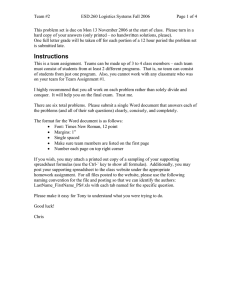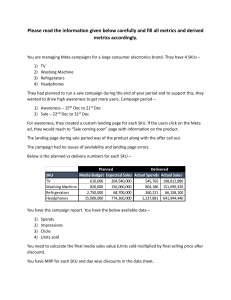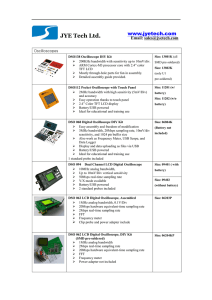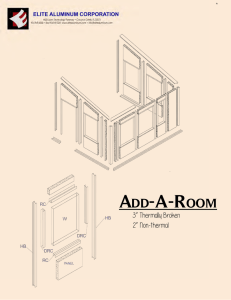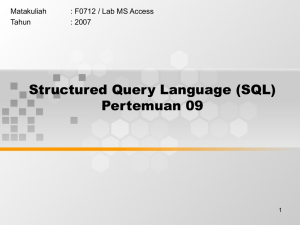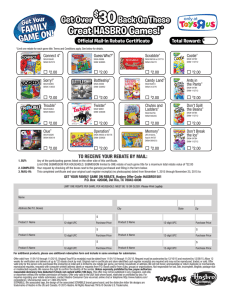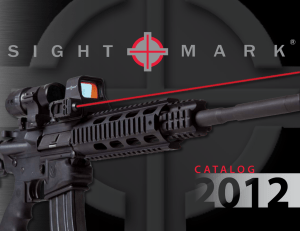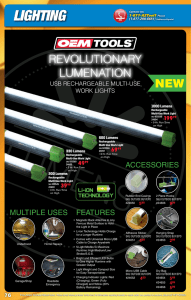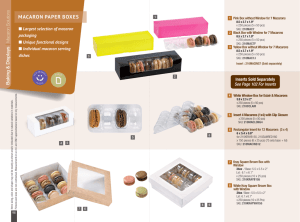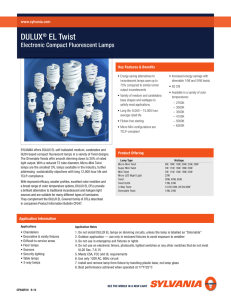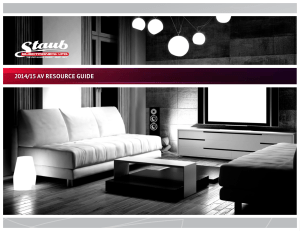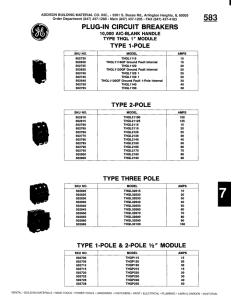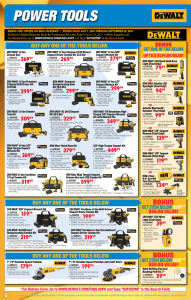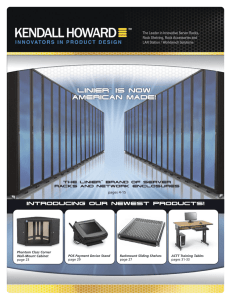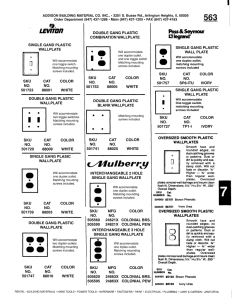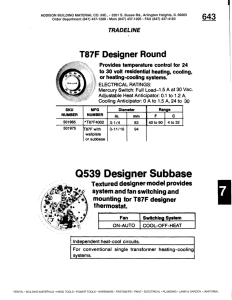PS3 ESD.260 Logistics Systems Fall 2006 Page 1 of 2
advertisement
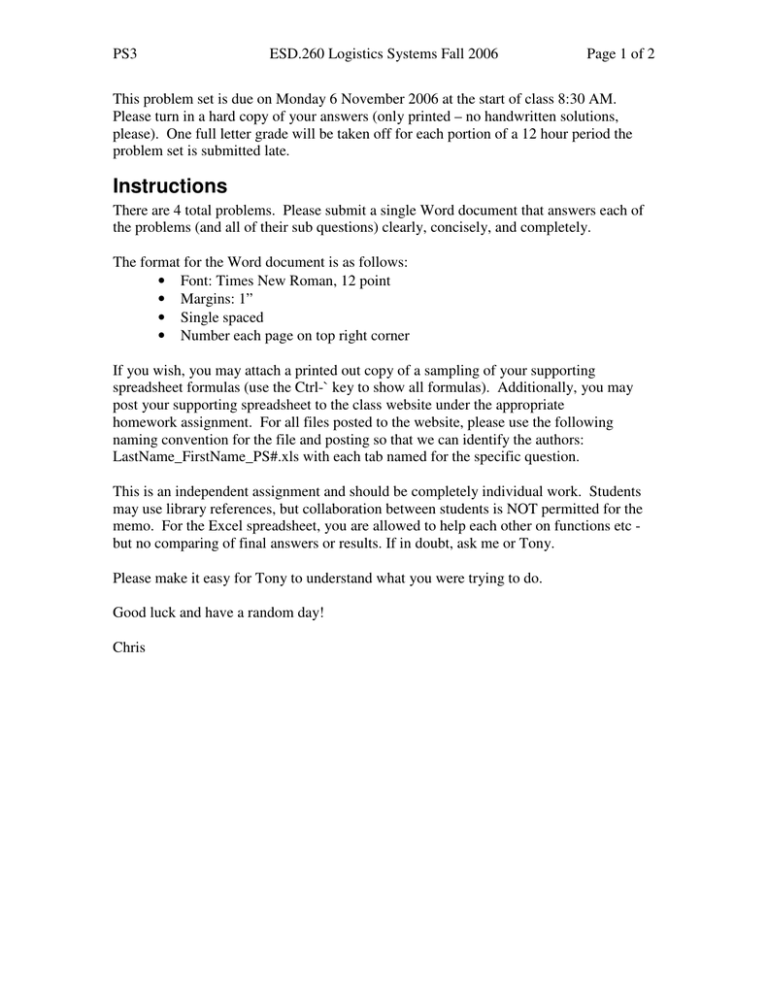
PS3 ESD.260 Logistics Systems Fall 2006 Page 1 of 2 This problem set is due on Monday 6 November 2006 at the start of class 8:30 AM. Please turn in a hard copy of your answers (only printed – no handwritten solutions, please). One full letter grade will be taken off for each portion of a 12 hour period the problem set is submitted late. Instructions There are 4 total problems. Please submit a single Word document that answers each of the problems (and all of their sub questions) clearly, concisely, and completely. The format for the Word document is as follows: • Font: Times New Roman, 12 point • Margins: 1” • Single spaced • Number each page on top right corner If you wish, you may attach a printed out copy of a sampling of your supporting spreadsheet formulas (use the Ctrl-` key to show all formulas). Additionally, you may post your supporting spreadsheet to the class website under the appropriate homework assignment. For all files posted to the website, please use the following naming convention for the file and posting so that we can identify the authors: LastName_FirstName_PS#.xls with each tab named for the specific question. This is an independent assignment and should be completely individual work. Students may use library references, but collaboration between students is NOT permitted for the memo. For the Excel spreadsheet, you are allowed to help each other on functions etc ­ but no comparing of final answers or results. If in doubt, ask me or Tony. Please make it easy for Tony to understand what you were trying to do. Good luck and have a random day! Chris PS3 ESD.260 Logistics Systems Fall 2006 Page 2 of 2 Problems Textbook Problems. Answer the following three problems in SPP: 7.1 – make sure you explain part c, 7.6 – assume for the case of the new contract that Canadian Wheel does not justify changing the order size, Q, and 7.9 Case Problem . After graduating from MIT, you have taken a job with Widget Co. in their Supply Chain Management Group. The VP of the group has asked you to take a look into one of their class C level items (SKU #12CD45F) and to write a ONE PAGE memo to her answering the following questions. Please be clear as to what approaches you have taken and assumptions that you have made. Also, be sure to submit a spreadsheet or additional appendices with any of your calculations for this problem as well. A. What is the estimated total annual ordering, holding, and shortage costs on SKU #12CD45F under the current inventory policy? B. What is the estimated fill rate? C. What order quantity and reorder point do you suggest? D. If your recommendations for Q and R differ from current company practice how would you justify the change? Be specific. PS: if your recommendation to part C. does not differ from the current practice of the firm, go back and rethink your answer… Here is the detailed information that you have gleaned by talking to the inventory manager of this part: SKU #12CD45F is managed in a physical distribution system considering both Cycle Stock and Safety Stock. Demand for the item is random but stationary and non-seasonal at a rate of 36,500 units per year. Forecasted lead time demand is about 600 units. Our demand forecasting algorithm has been generating forecast RMSE of 300 units for this item. Lead time usage forecast errors can be assumed to be approximately normally distributed. All demands which occur during a system stockout become backorders. The policy on Class "C" items is to set an order quantity equal to 25% of annual demand (i.e., order four times per year) and to set a reorder point equal to 150% of expected leadtime demand. There are about, by the inventory manager’s estimate, about 400 other Class C parts that are similar to SKU #12CD45F that Widget Co supports. The current VP of Supply Chain established the company’s Class C inventory policy when she was an inventory manager for that product line. SKU #12CD45F has a purchase cost of $40.00 per unit, and we sell it to our 7 top tier customers (75% of the total volume) at a price of $60.00 per unit and our second tier customers (25% of the total volume) at $64.00 per unit. Our system ordering costs are $200 per order placed, and our inventory holding costs are 12% annually. The firm is unsure about the exact cost of backorders, but they generally agree that it' s at least $5.00 per unit, and that it is surely no more than $10 per unit backordered. Our vendor charges us for delivery of the item to our stockage point at a rate of $4.00 per unit, plus a fixed drop-off charge of $28.25 per delivery.


